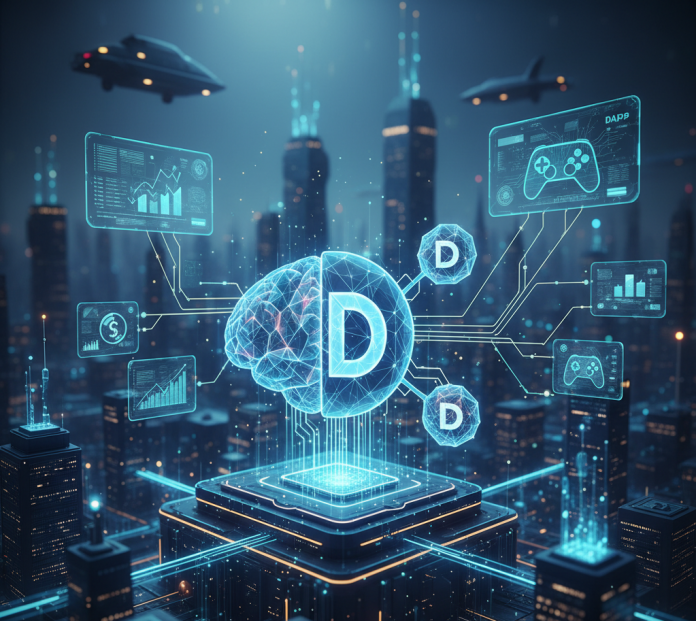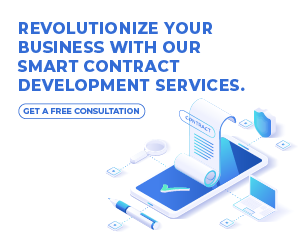The evolution of the internet has always been marked by shifts in power, control, and intelligence. We moved from the static Web1 to the centralized, interactive Web2. Now, the decentralized era of Web3 promises a paradigm where users, not corporations, own their data and digital identities. At the heart of this revolution are Decentralized Applications, or DApps, which leverage blockchain’s foundational principles of transparency, immutability, and trustless operation.
However, true digital autonomy and sophistication require more than just decentralization; they demand intelligence. This necessity is driving the most profound technological fusion of the current age: the merging of Artificial Intelligence (AI) with blockchain technology to create AI-powered DApps. This synthesis is not just about placing two buzzwords together; it’s about engineering intelligent, autonomous, and secure digital ecosystems that promise to redefine commerce, finance, governance, and every aspect of digital life.
The global blockchain AI market was valued at USD 550.70 million in 2024. It is projected to reach USD 4,338.66 million by 2034. The blockchain AI market is expected to grow at a CAGR of 22.93% from 2025 to 2034
The Foundational Synergy: Why AI Needs Blockchain, and Vice Versa
The integration of AI and blockchain is a relationship built on complementary strengths, addressing the core vulnerabilities inherent in each technology when used in isolation.
Blockchain: The Trust Layer for AI
AI, particularly deep learning models, is only as good as the data it consumes. In a Web2 world, AI often relies on massive, centralized, and often non-transparent datasets, leading to concerns about bias, manipulation, and lack of accountability.
Blockchain solves this by providing AI with a verifiable, secure, and auditable infrastructure.
- Data Integrity and Provenance: Blockchain acts as an immutable ledger, recording the origin and history of the data used to train AI models. This ensures that the AI operates on untampered information, directly combating the “Garbage In, Garbage Out” problem. This is critical for AI development companies building mission-critical systems.
- Decentralized Training and Ownership: Traditional AI training is controlled by a few giants. Through technologies like Federated Learning coupled with blockchain, we can enable Decentralized Machine Learning (DeML). Data owners can contribute their data (or models) to training pools without relinquishing custody, with the blockchain managing access permissions and fair compensation.
- Auditable Algorithms: Smart contracts can enforce transparency on how an AI model makes decisions. While the model itself might be complex, the rules, parameters, and inputs are verified and recorded on the ledger, providing an unprecedented level of accountability, essential for governance DApps and compliance.
Also read: AI and Blockchain Integration: Powering Intelligent Automation for Enterprise Transformation
AI: The Intelligence Layer for Blockchain
While blockchain excels at security and transparency, it often lacks dynamic intelligence, adaptability, and high-speed processing capabilities due to the inherent consensus mechanisms.
AI brings the necessary intelligence to transform static blockchain ledgers into reactive, adaptive systems.
- Smart Contract Automation: AI can monitor real-time data feeds (oracles) and execute complex smart contracts based on predictive analysis rather than just predefined thresholds. For example, in a supply chain DApp, an AI agent could automatically trigger a penalty clause if delivery delay predictions exceed a certain probability.
- Network Optimization and Security: AI can analyze transaction patterns, identify potential bottlenecks, and dynamically adjust parameters (like gas fees or block size) to optimize network performance and scalability. Furthermore, AI-powered systems can detect and flag anomalous transactions or malicious attacks with far greater efficiency than traditional security protocols, enhancing the security of the underlying blockchain development.
- Personalized User Experience (Web3 AI): AI allows DApps to move beyond generic interfaces. By analyzing user behavior on-chain (while preserving privacy), AI can offer hyper-personalized content, tailored recommendations, and customized UI/UX within the decentralized ecosystem, making Web3 adoption smoother and more engaging.
Expanding Horizons: Key AI-Powered DApp Categories
The transformative potential of AI-powered DApps is creating new categories of decentralized applications across every major industry.
1. Next-Generation Decentralized Finance (DeFi 2.0)
DeFi is perhaps the most immediate beneficiary. AI introduces sophistication and risk management previously exclusive to traditional finance.
- Algorithmic Trading DApps: AI analyzes complex market indicators, sentiment data, and historical performance to execute high-frequency, optimized trades on decentralized exchanges (DEXs), improving liquidity provider returns and minimizing impermanent loss.
- AI-Driven Risk Modeling: Lending DApps use AI to assess collateral value and counterparty risk in real-time, allowing for dynamic interest rates and more resilient protocol governance.
- Fraud Detection and Compliance: AI monitors transaction flows across the blockchain network to detect patterns indicative of money laundering or market manipulation, ensuring protocols adhere to evolving regulations while remaining decentralized.
2. Autonomous Decentralized Organizations (ADOs) and AI Agents
This represents the ultimate level of decentralization. An ADO is a decentralized autonomous organization (DAO) where core governance and operational tasks are handled by sophisticated AI agents in DApps.
- Self-Governing Protocols: AI agents can propose, vote on, and execute protocol upgrades and parameter changes based on network health, community feedback, and predefined goals, ensuring the DAO remains agile and efficient.
- Decentralized Workforce: AI agents can be deployed within a DApp to perform routine tasks, customer service, or data aggregation, all managed and paid via smart contracts on the blockchain, creating a global, automated, and trustless workforce.
Gartner predicts that at least 15% of day-to-day work decisions will be made autonomously through agentic AI by 2028
3. Enterprise Supply Chain and Data Verification
Enterprises require both immutability (blockchain) and predictive capability (AI).
- Predictive Logistics: AI forecasts delivery delays, quality control issues, or supply shortages, triggering smart contracts on the blockchain to notify stakeholders, arrange alternative transport, or automatically release escrowed funds upon verifiable events.
- Data Marketplaces: DApps create decentralized marketplaces where high-quality, verified data (from IoT sensors, clinical trials, etc.) is tokenized. AI determines the quality and fair price of this data, while the blockchain ensures secure, auditable transactions between data sellers and model developers.
Addressing the Challenges of Building AI-Powered DApps
The path to widespread adoption requires solving several complex engineering challenges that DApp development company and blockchain development company are actively tackling.
- Computational Costs and Latency: Running complex AI model inference directly on-chain is prohibitively expensive and slow. Solutions involve using blockchain primarily for data integrity verification and payment/incentive layers, while the bulk of the AI computation is handled off-chain via dedicated decentralized computing resources (like GPU networks) that connect to the DApp via trusted oracles.
- Verifying Off-Chain AI Computation: If the AI model runs off-chain, how can the DApp trust the result? This requires sophisticated techniques such as Zero-Knowledge Proofs (ZKPs) and Verifiable Computation (VC), which allow the computational server to prove cryptographically that the AI was executed correctly and honestly, without revealing the underlying proprietary model or input data.
- The Oracle Problem for AI: AI models rely on vast external data sets. Secure oracles are needed to feed real-world data (market prices, weather, sensor readings) into the smart contracts in a trustless manner. For AI, these oracles must also verify the quality, consistency, and non-manipulation of the data stream itself.
The Role of Specialized Development Companies
Successfully merging these two highly specialized fields requires cross-disciplinary expertise. The focus is shifting towards AI development company that possess deep knowledge of decentralized infrastructure, and blockchain development companies that understand machine learning principles.
These specialized firms are instrumental in:
- Designing Token Economics: Creating incentive models (tokenization) that reward users for providing high-quality data and computational resources to the AI models.
- Building Scalable Infrastructure: Choosing or developing Layer 2 solutions and specialized consensus mechanisms that can handle the high throughput demanded by intelligent DApps.
- Security Audits: Ensuring that both the smart contract logic and the integrated AI model’s interaction points are resilient against novel attack vectors that target the AI/blockchain boundary.
Also read: 10 Questions to Ask Before Hiring a dApp Development Company
Conclusion: The Intelligent Decentralized Web
The convergence of AI and blockchain is the inevitable trajectory of Web3. It moves beyond simply decentralizing applications to creating truly intelligent, autonomous, and accountable digital services. This fusion unlocks unprecedented efficiency, risk reduction, and personalized experiences, marking a definitive step away from the centralized bottlenecks and data monopolies of the past. As demonstrated by the robust market growth and industry adoption figures, the intelligent decentralized web is no longer a theoretical pursuit — it is the next phase of digital evolution.
This is where specialized firms like Vegavid step in, offering the deep, combined expertise in DApp development, AI integration, and enterprise blockchain solutions needed to build truly intelligent, scalable, and future-proof digital products.
Ready to accelerate your journey into the intelligent decentralized web?
Schedule a free consultation with Vegavid today!
Frequently Asked Questions (FAQs)
Q1. What is an AI-Powered DApp?
An AI-powered DApp (Decentralized Application) is an application that runs on a decentralized network (like a blockchain) but integrates Artificial Intelligence to provide advanced functionalities. This includes using AI for real-time analysis, automation, personalized recommendations, and intelligent decision-making within the trustless environment of the blockchain.
Q2. Why is blockchain critical for trust in AI systems?
Blockchain is critical because it provides a verifiable, immutable, and transparent ledger for AI data and logic. This ensures data integrity (the AI models are trained on untampered data) and auditable algorithms (the rules and inputs governing AI decisions can be verified), which are essential for building trust and accountability in autonomous systems.
Q3. How does AI help with DApp scalability and performance?
AI can significantly improve DApp scalability by optimizing the underlying blockchain network. AI models can predict network congestion and dynamically adjust parameters like gas fees or resource allocation. They can also streamline off-chain computation, ensuring that complex AI tasks don’t burden the decentralized network’s throughput.
Q4. What are AI Agents in the context of DApps?
AI Agents are autonomous software programs embedded within DApps or DAOs that can execute actions, make operational decisions, and adapt based on learned data, without continuous human intervention. They are governed by smart contracts on the blockchain, ensuring their actions remain transparent and aligned with the protocol’s rules.
Q5. What is the biggest challenge in integrating AI models with DApps?
The biggest challenge is Verifying Off-Chain Computation. Since complex AI models must run off-chain due to blockchain’s computational limits, ensuring the results transmitted back to the DApp’s smart contract are accurate and untampered requires advanced cryptographic solutions like Zero-Knowledge Proofs (ZKPs) and Verifiable Computation



